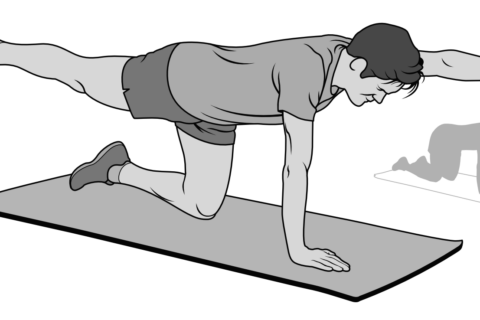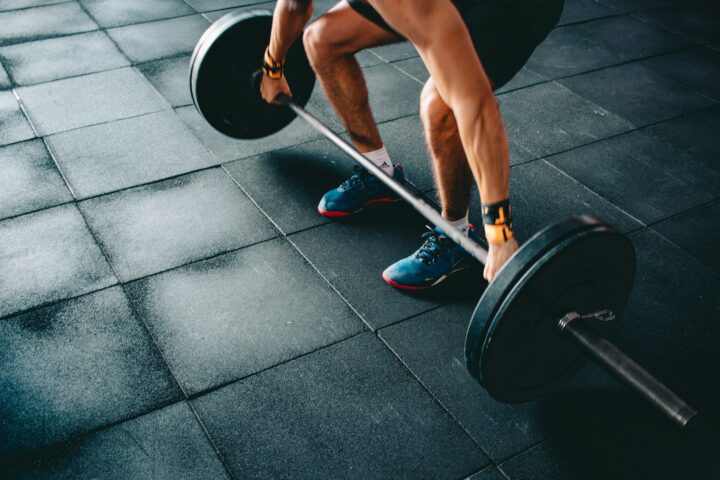In Week 2 of our Strength Training Series, we progress the program with exercises that will help develop your strength and durability.
Video Transcript
Ryan Kohler 00:00
Here in week two, we’re going to add a few new exercises for you, there may still be a little bit of residual soreness from last week. These two new exercises will hit slightly different muscle groups: the front squat that we’ll do will target a little bit more of the quadriceps, and then we’re going to add in a pushing exercise to complement the pulling that we did in the previous week. With that, again, new exercises focus on form over weight, let’s go head over and do our front squats.
Front squats
Ryan Kohler 00:31
Here in week two, we’re looking at our front squat, and we’re doing three to four sets of eight to 10 reps. We’ll come up to the bar here, and the idea with this is to have our grip a little bit closer together. But again, find what feels comfortable for you. We’re going to let that bar roll right up onto the front of the shoulders here. Then we’re going to step away with it slightly from the rack, and then get our feet comfortably wide apart, I like to go a little bit more than hip width.
One of the keys with this exercise is to keep a relatively upright torso. You want to have these elbows pointing high. You don’t want to end up trying to squat like this, have them up high and tall. This also involves a lot more of the core when you try to stabilize this way. From here, we’re going to start by moving the hips back to start that descent. We shift those hips back, descend down toward the floor to a comfortable position, and then drive back up finishing with a strong hip drive at the top.
If you find that you have any issues with risk mobility, or shoulder mobility or just discomfort when you try to get into this position, you can change your grip. What you’ll do there is just walk into the bar this way, allow it to sit kind of on the front of the shoulders there and then cross your arms over and lift up and step back this way. That way your wrists are free and you can still maintain that nice tall upright position.
Deadlifts
Ryan Kohler 01:50
Now we’ll do the deadlift, three to four sets of 10 to 12 reps.
Barbell back squat
Ryan Kohler 02:11
All right, so we’re going with the barbell back squat three to four sets 10 to 12 reps.
Push-ups
Ryan Kohler 02:36
This next exercise is your classic push-up, we’re looking at two to three sets of eight to 10 reps. One of the keys with this is that we want to have a nice athletic posture for this, it’s easy to do these wrong. Think about letting your shoulders come down and back when you start them. From there, I’m going to show you three different variations: regular variation, progression and regression. Here we go!
We’re going to start here with our shoulders generally over our hands in a nice full push up-plank position here. One thing to avoid is letting the hips drop like this, or go into more of that down dog position. From here, we’re just going to lower ourselves down and then come right back up. Now if that’s too difficult to start, we can regress this, have you gone to your knees and perform the same movement. Alternatively, if you want to make this more difficult, you can go up in your push-up position as you go down. You can fully release the hands and then press back up strongly. Here we go.
Row
Ryan Kohler 03:49
Okay, now we’ve got our row, two to three sets 10 to 12 reps.
That’ll do it for us in week two. Look forward to next week where we’ll bring in a few new exercises and we’ll see you then!



